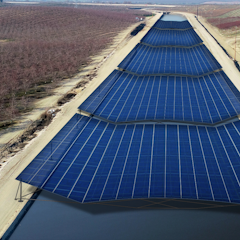
University of California, Merced

UC Merced opened Sept. 5, 2005, as the 10th campus in the University of California system and the first American research university of the 21st century. Situated near Yosemite National Park, the campus significantly expands access to the UC system for students throughout the state, with a special mission to increase college-going rates among students in the San Joaquin Valley. It also serves as a major base of advanced research, a model of sustainable design and construction, and a stimulus to economic growth and diversification throughout the region.
Links
Displaying 1 - 20 of 68 articles

As muitas vantagens da mandioca parecem fazer dela a cultura ideal, exceto por uma desvantagem: ela é altamente venenosa. A engenhosidade humana tornou a mandioca comestível por milênios.

Cassava’s many assets would seem to make it the ideal crop, except for one drawback: It’s highly poisonous. Human ingenuity has made cassava edible for millennia.

The universe is expanding faster than physicists would expect. To figure out what processes underlie this fast expansion rate, some researchers are first trying to rule out what processes can’t.

Alarmingly, about half the people exposed to wildfires in Washington and Oregon were those least able to afford to protect their homes, evacuate safely and recover.

Many families in the US encountered empty shelves when they went in search of infant formula during COVID-19.

Megalodon, the world’s largest known shark species, swam the oceans long before humans existed. Its teeth are all that’s left, and they tell a story of an apex predator that vanished.

La duración de la temporada de incendios ha aumentado en casi todas las regiones del mundo.

Fire weather reason – when wildfires are most likely to strike – has expanded almost everywhere.

From pulling carbon dioxide out of the air to turning water into fuel, innovators are developing new technologies and pairing existing ones to help slow global warming.

Covering the state’s canals with solar panels would reduce evaporation of precious water and help meet renewable energy goals – all while saving money.

The risk from heat waves is about more than intensity – being able to cool off is essential, and that’s hard to find in many low-income areas of the world.

This is a transcript of The Conversation Weekly podcast episode published on January 20 2022.

Plus, a lawyer explains the legal battle over Canada’s discriminatory First Nations child welfare system. Listen to The Conversation Weekly.

If you ever feel like you can’t stop eating sugar, you are responding precisely as programmed by natural selection. What was once an evolutionary advantage has a different effect today.

The State Water Project cut its initial allocations for water agencies to 0% for 2022. A California water expert explains why.

As the risk of fires rises in areas once considered too wet to burn, it creates hazards for mountain communities and for downstream water supplies.

These giant predators are helping solve the mystery of Earth’s cooling shift some 50 million years ago.

As the risk of fires rises in areas once considered too wet to burn, it creates hazards for mountain communities and for downstream water supplies.

Drought conditions are so bad, fish hatcheries are trucking their salmon to the ocean and ranchers are worried about having enough water for their livestock.

Installing solar panels over California’s 4,000 miles of canals could generate less expensive, renewable energy, save water, fight climate change – and offer a solution for the thirsty American West.
